| Standard | President | Description |
|---|
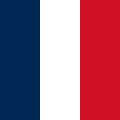 | Jules Grévy | A vertical tricolour of blue, white, and red, proportions 1:1. |
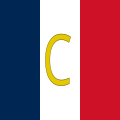 | Sadi Carnot | A vertical tricolour of blue, white, and red (proportions 1:1) with the golden "C". |
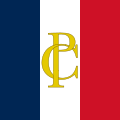 | Jean Casimir-Perier | A vertical tricolour of blue, white, and red (proportions 1:1) with the golden "CP". |
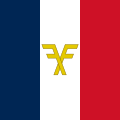 | Félix Faure | A vertical tricolour of blue, white, and red (proportions 1:1) with the golden "FF". |
 | Émile Loubet | A vertical tricolour of blue, white, and red (proportions 1:1) with the golden "EL". |
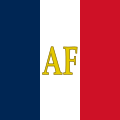 | Armand Fallières | A vertical tricolour of blue, white, and red (proportions 1:1) with the golden "AF". |
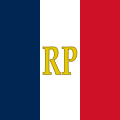 | Raymond Poincaré | A vertical tricolour of blue, white, and red (proportions 1:1) with the golden "RP". |
 | Paul Deschanel | A vertical tricolour of blue, white, and red (proportions 1:1) with the golden "PD". |
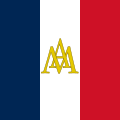 | Alexandre Millerand | A vertical tricolour of blue, white, and red (proportions 1:1) with the golden "AM". |
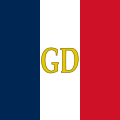 | Gaston Doumergue | A vertical tricolour of blue, white, and red (proportions 1:1) with the golden "GD". |
 | Paul Doumer | A vertical tricolour of blue, white, and red (proportions 1:1) with the golden "PD". |
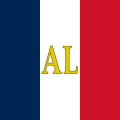 | Albert Lebrun | A vertical tricolour of blue, white, and red (proportions 1:1) with the golden "AL". |
 | Albert Lebrun | A vertical tricolour of blue, white, and red (proportions 1:1) with the golden "AL". |
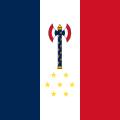 | Philippe Pétain | A vertical tricolour of blue, white, and red (proportions 1:1) with the axe and 7 golden stars. |
 | Philippe Pétain | A vertical tricolour of blue, white, and red (proportions 2:3) with the axe and 7 golden stars. |
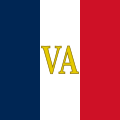 | Vincent Auriol | A vertical tricolour of blue, white, and red (proportions 1:1) with the golden "VA". |
 | René Coty | A vertical tricolour of blue, white, and red (proportions 1:1) with the golden "RC". |
 | Charles de Gaulle | A vertical tricolour of blue, white, and red (proportions 1:1) with the golden "CG" and the red Cross of Lorraine. |
 | Charles de Gaulle | A vertical tricolour of blue, white, and red (proportions 2:3) with the red Cross of Lorraine. |
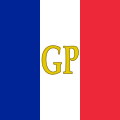 | Georges Pompidou | A vertical tricolour of blue, white, and red (proportions 1:1) with the golden "GP". |
 | Georges Pompidou | A vertical tricolour of blue, white, and red (proportions 2:3) with the golden "GP". |
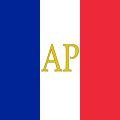 | Alain Poher | A vertical tricolour of blue, white, and red (proportions 1:1) with the golden "AP". |
 | Alain Poher | A vertical tricolour of blue, white, and red (proportions 2:3) with the golden "AP". |
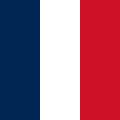 | Valéry Giscard d'Estaing | A vertical tricolour of blue, white, and red (proportions 1:1). |
 | Valéry Giscard d'Estaing | A vertical tricolour of blue, white, and red (proportions 2:3). |
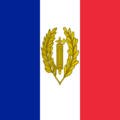 | Valéry Giscard d'Estaing | A vertical tricolour of blue, white, and red (proportions 1:1) with the golden fasces. |
 | Valéry Giscard d'Estaing | A vertical tricolour of blue, white, and red (proportions 2:3) with the golden fasces. |
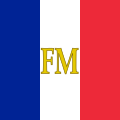 | François Mitterrand | A vertical tricolour of blue, white, and red (proportions 1:1) with the golden "FM". |
 | François Mitterrand | A vertical tricolour of blue, white, and red (proportions 2:3) with the golden "FM". |
 | François Mitterrand | A vertical tricolour of blue, white, and red (proportions 1:1) with the golden oak tree. |
 | François Mitterrand | A vertical tricolour of blue, white, and red (proportions 2:3) with the golden oak tree. |
 | Jacques Chirac | A vertical tricolour of blue, white, and red (proportions 1:1). |
 | Jacques Chirac | A vertical tricolour of blue, white, and red (proportions 2:3). |
 | Nicolas Sarkozy | A vertical tricolour of blue, white, and red (proportions 1:1). |
 | Nicolas Sarkozy | A vertical tricolour of blue, white, and red (proportions 2:3). |
 | François Hollande | A vertical tricolour of blue, white, and red (proportions 1:1). |
 | François Hollande | A vertical tricolour of blue, white, and red (proportions 2:3). |
|

































